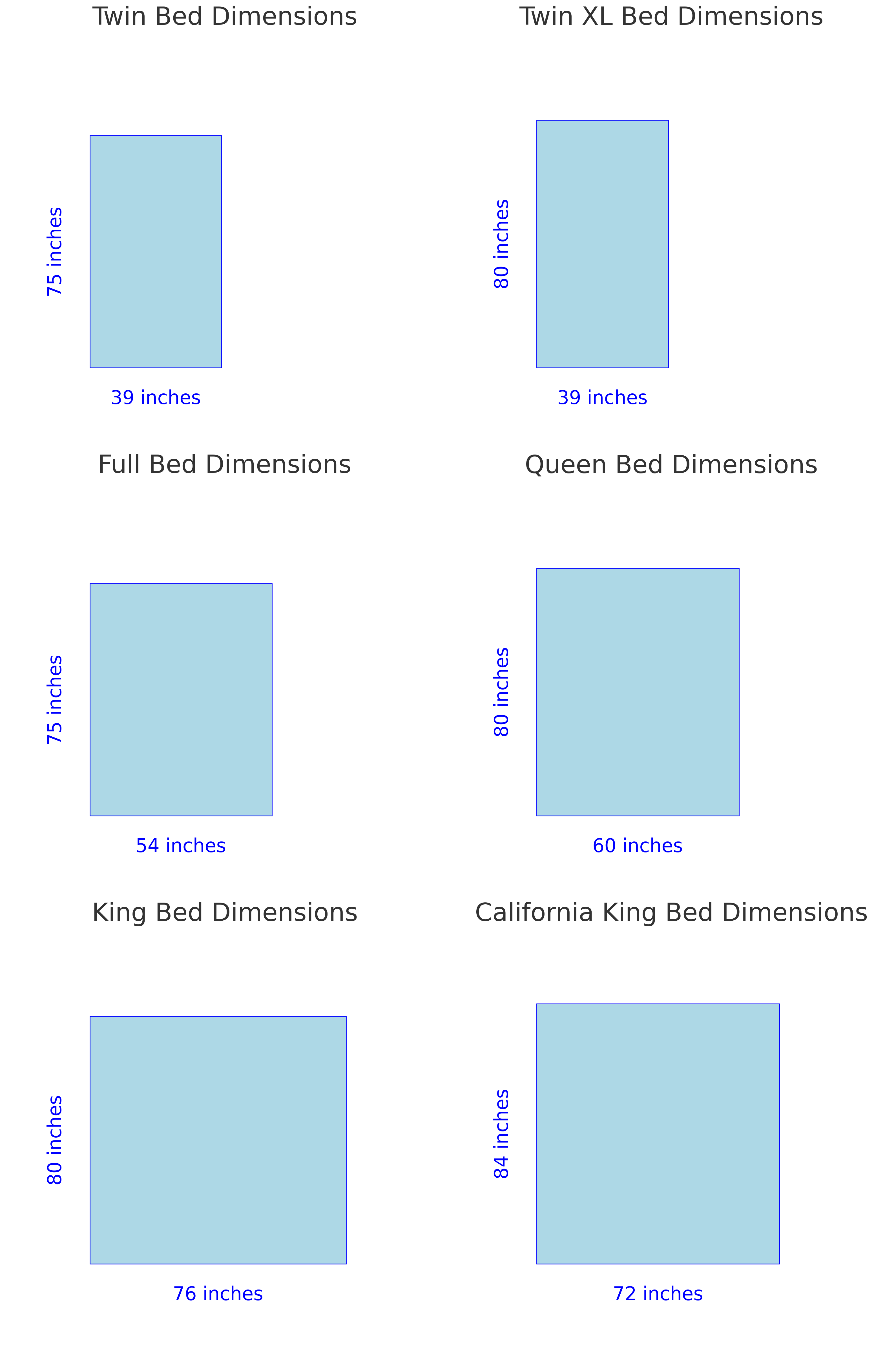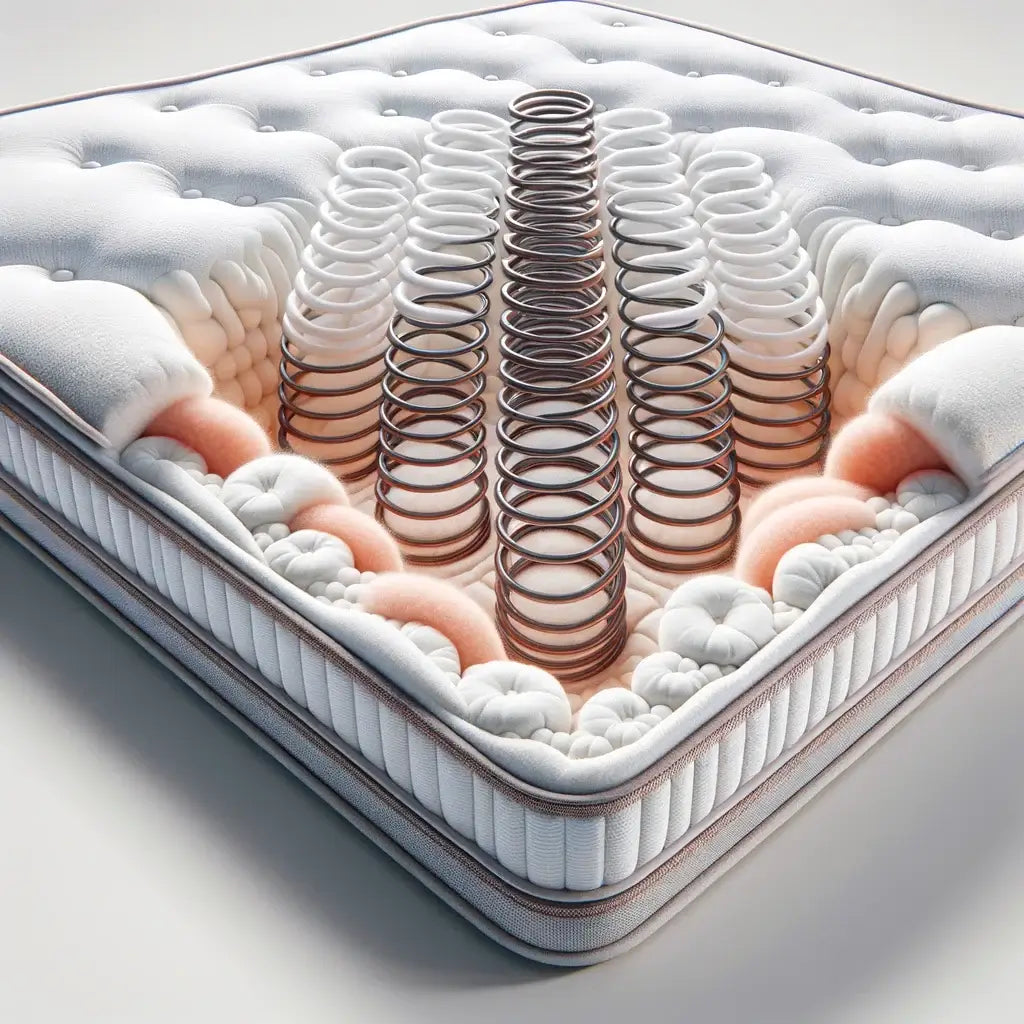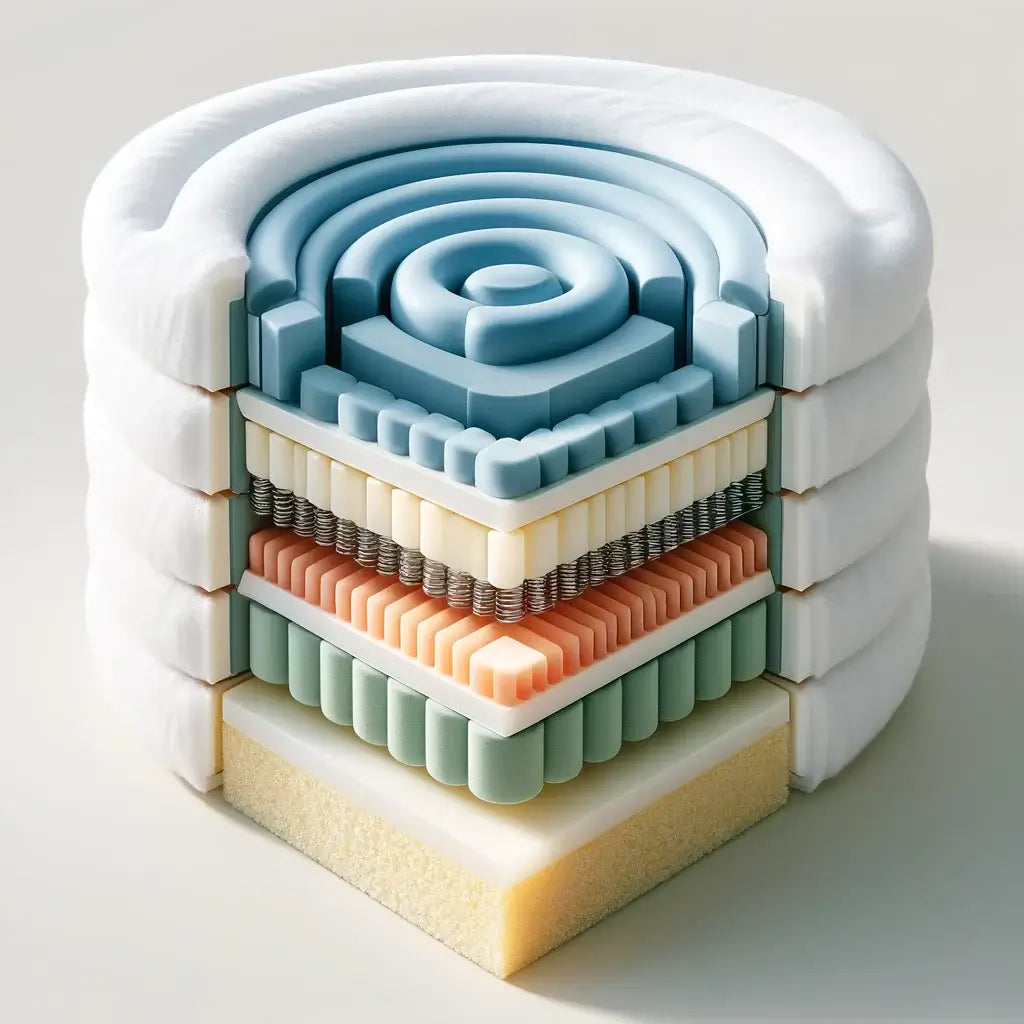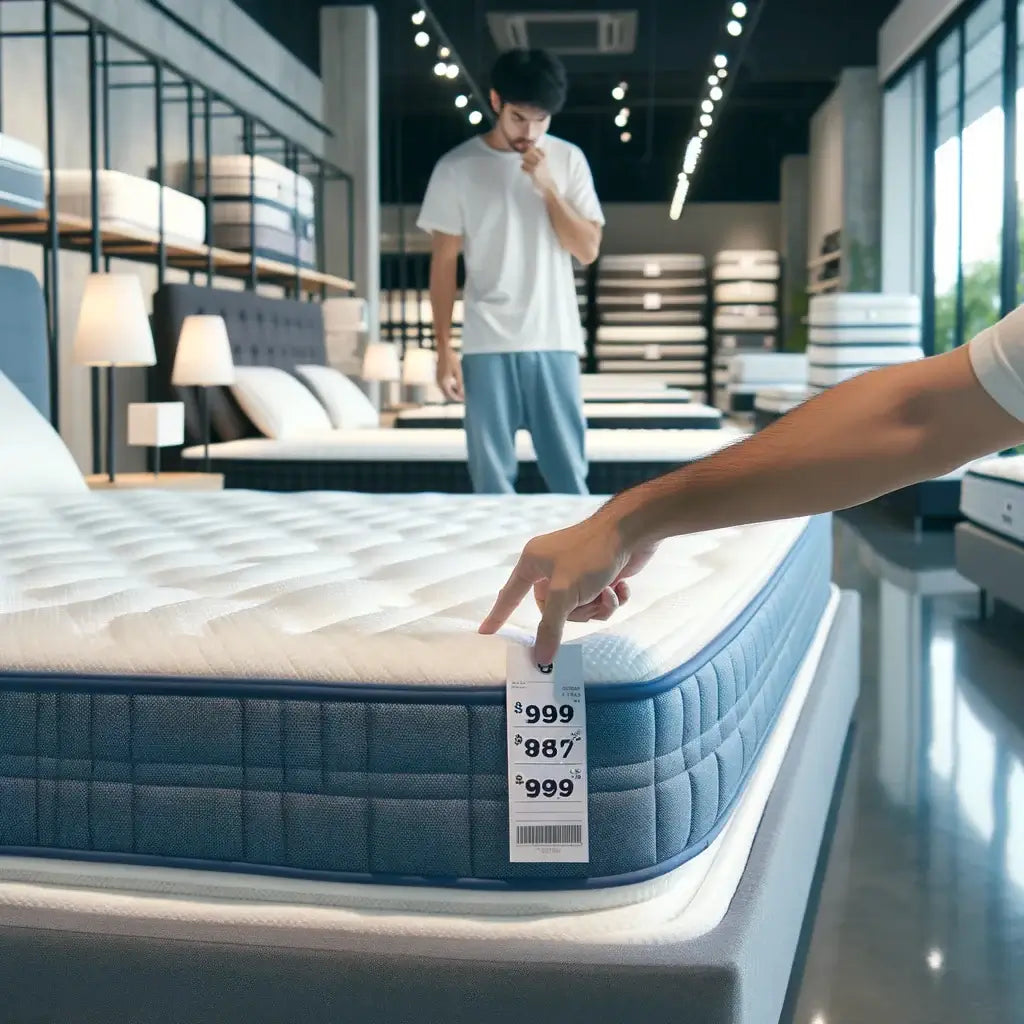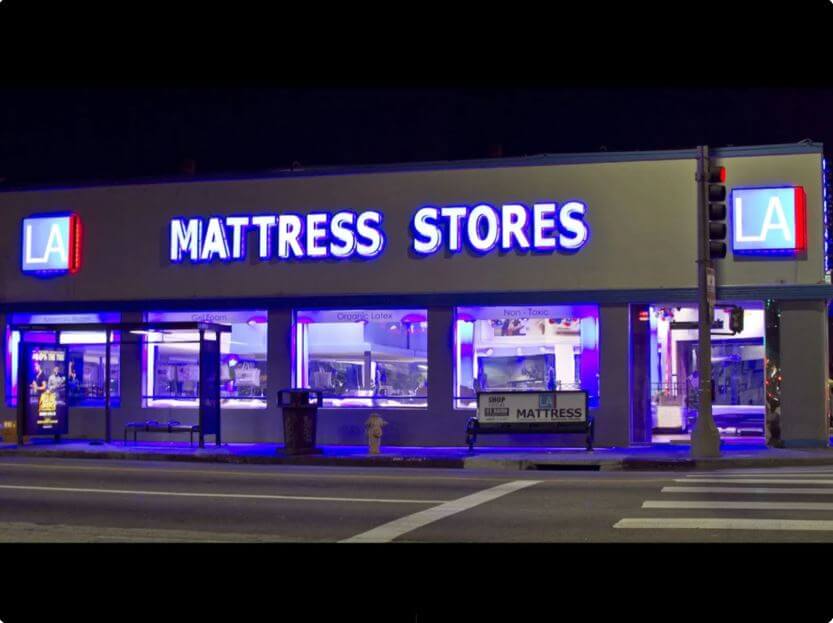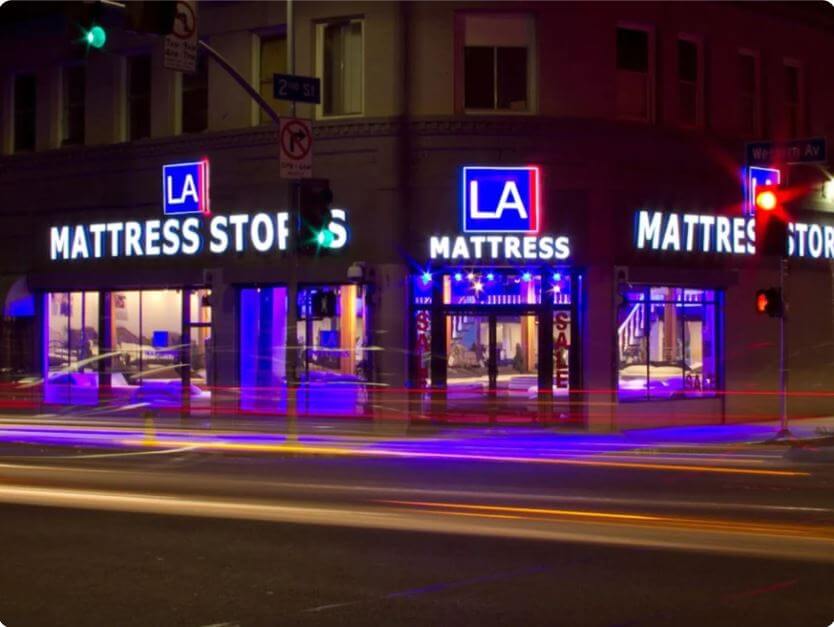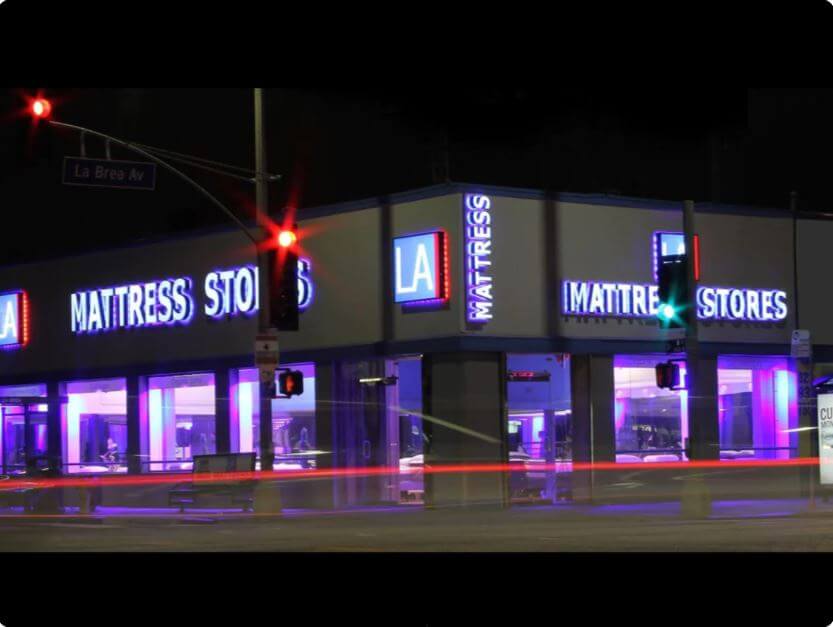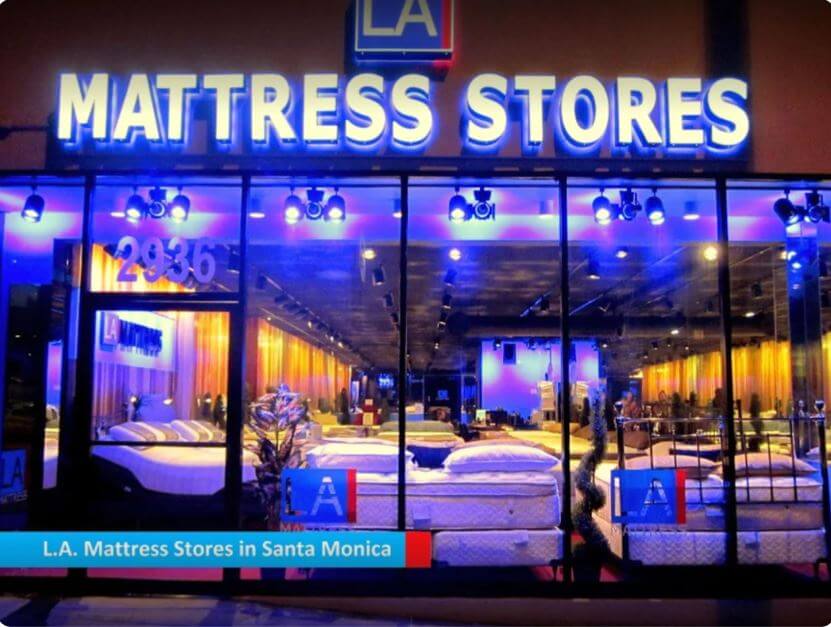Mattress Buying Guides | Expert Advice
Purchasing a mattress can feel quite overwhelming. Allow our guides at the LA Mattress Store to assist you in navigating through the numerous choices available. Our comprehensive guides offer insights, on understanding different levels of firmness and selecting suitable materials ensuring that your mattress buying experience is both straightforward and gratifying.Twin-sized Bed: Width: 38 inches, Length: 75 inches
Twin XL-sized Bed: Width: 38 inches, Length: 80 inches
Full-sized Bed: Width: 54 inches, Length: 75 inches
Queen-sized Bed: Width: 60 inches, Length: 80 inches
King-sized Bed: Width: 76 inches, Length: 80 inches
California King-sized Bed: Width: 72 inches, Length: 84 inches
Welcome to Bed Ed at LA Mattress Stores
Our mission is to help you pick the perfect mattress that perfectly matches your comfort preferences and sleep requirements. We offer a wide range of high-quality mattresses, each designed to provide exceptional comfort and support. Explore the tabs below to discover the features, benefits, and considerations of each mattress type, ensuring you make an informed decision for your best night's sleep.
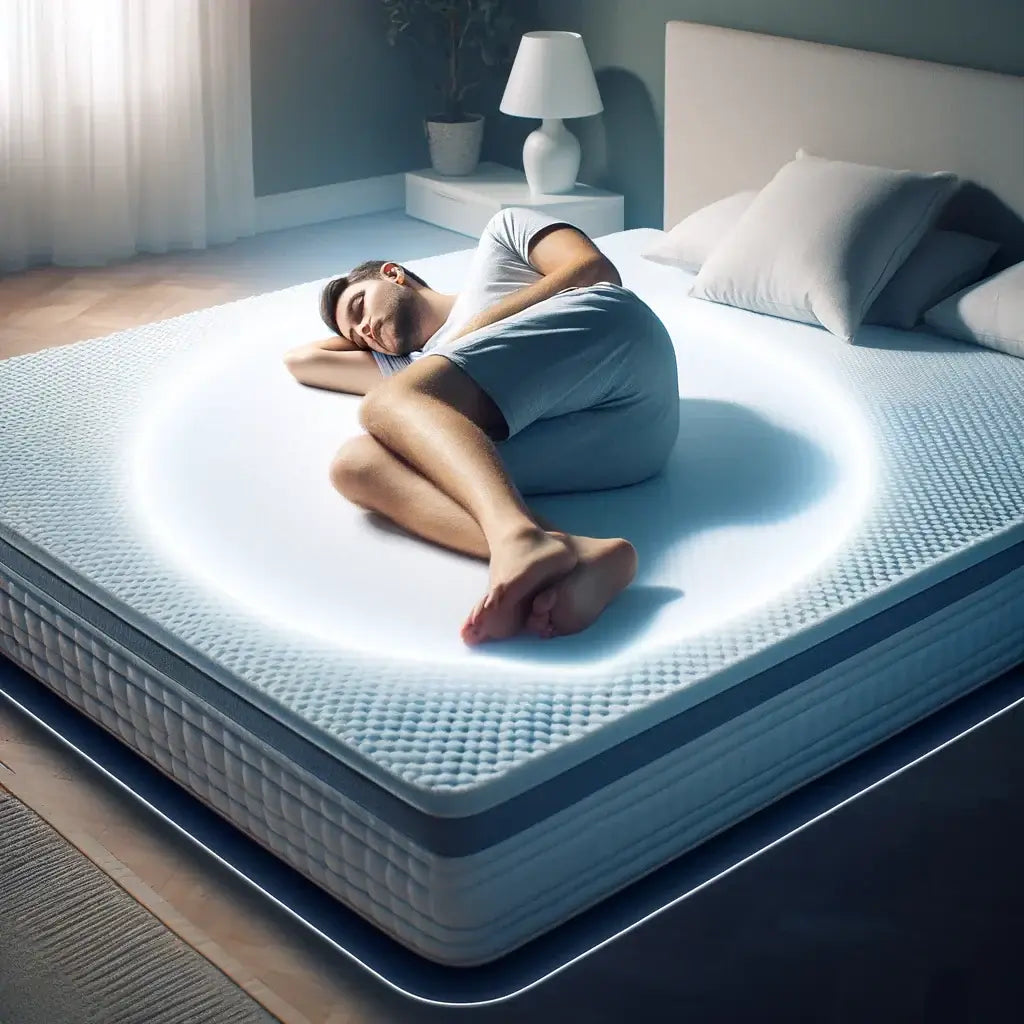
Best Mattress for a Side Sleeper:
Recommended Mattress Type: Memory Foam or Hybrid
Why: Side sleepers need a mattress that offers excellent pressure relief for their shoulders and hips. Memory foam mattresses are ideal because they contour to the body, providing cushioning where it's needed most. Hybrid mattresses, which combine innerspring coils with memory foam, offer a balance of support and contouring comfort.
Features to Look For:
- Medium to medium-soft firmness
- Pressure-relieving materials
- Good edge support
Best Mattress for a Back Sleeper:
Recommended Mattress Type: Medium-Firm Innerspring or Memory Foam
Why: Back sleepers require a mattress that supports the natural curve of the spine without allowing the hips to sink too deeply. Medium-firm mattresses provide the necessary support while offering enough cushioning for comfort.
Features to Look For:
- Medium-firm to firm support
- Lumbar support features
- Balanced comfort and support
Best Mattress for a Stomach Sleeper:
Recommended Mattress Type: Firm Innerspring or Latex
Why: Stomach sleepers need a firmer mattress to prevent their hips from sinking, which can lead to lower back pain. Firm innerspring or latex mattresses provide the support required to keep the spine aligned.
Features to Look For:
- Firm support
- Minimal sinkage
- Responsive materials
Consider Your Weight: Heavier individuals may require a firmer mattress for adequate support, while lighter individuals might prefer a softer mattress for pressure relief.
Test the Mattress: Whenever possible, try out a mattress in-store or take advantage of sleep trials to ensure it suits your needs.
Look for Quality Materials: High-quality materials tend to last longer and provide better support and comfort over time.
Pros and Cons of Different Mattress Types
Choosing the right mattress is essential for a good night's sleep and overall health. Each mattress type has its unique advantages and disadvantages. Here's a detailed look at the pros and cons of the most popular mattress types:
1. Memory Foam
Pros:
- Pressure Relief: Excellent for relieving pressure points and providing body contouring.
- Motion Isolation: Great at isolating motion, making them ideal for couples.
- Comfort: High levels of comfort for various sleeping positions.
Cons:
- Heat Retention: Can retain heat, leading to a warmer sleep experience.
- Initial Odor: May have an off-gassing smell when new.
- Cost: Can be more expensive than innerspring mattresses.
2. Latex
Pros:
- Durability: Long-lasting and resilient.
- Support and Comfort: Provides a good balance of support and pressure relief.
- Natural Options: Natural latex mattresses are hypoallergenic and eco-friendly.
- Breathability: Good airflow and temperature regulation.
Cons:
- Cost: Typically more expensive than other types.
- Weight: Heavier and harder to move.
- Firmness: May be too firm for some sleepers.
3. Innerspring
Pros:
- Affordability: Generally less expensive than other types.
- Support: Good support for back and stomach sleepers due to their firm structure.
- Breathability: Excellent airflow helps regulate temperature.
- Variety: Available in a wide range of firmness levels and styles.
Cons:
- Durability: Tend to wear out faster than other types.
- Motion Transfer: Less effective at isolating motion, which can be a problem for couples.
- Pressure Relief: May not provide adequate contouring for side sleepers.
4. Hybrid
Pros:
- Best of Both Worlds: Combines the support of innerspring with the comfort of memory foam or latex.
- Support: Provides excellent support and contouring.
- Breathability: Better airflow than memory foam mattresses.
- Versatility: Suitable for a wide range of sleepers.
Cons:
- Cost: Generally more expensive due to the combination of materials.
- Weight: Can be heavy and difficult to move.
- Durability: The combination of materials may wear out at different rates.
When choosing a mattress, consider your specific needs and preferences, such as your sleeping position, desired firmness level, and budget. By understanding the pros and cons of each mattress type, you can make an informed decision that leads to better sleep quality and overall well-being.
Budget Mattresses ($400 to $1,000):
Pros:
- Affordability: Ideal for those with limited budgets.
- Basic Comfort: Suitable for temporary use or guest rooms.
- Variety: Available in various types, including innerspring and foam.
Cons:
- Durability: May wear out faster and require replacement sooner.
- Support: Limited support and comfort features.
- Material Quality: Lower quality materials may not provide adequate pressure relief or longevity.
Best For:
- Budget-conscious buyers
- Guest rooms
- Short-term use.
Mid-Range Mattresses ($1,000 to $2,500):
Pros:
- Premium Materials: High-quality materials such as natural latex, advanced memory foam, and luxury hybrid constructions.
- Enhanced Comfort and Support: Superior comfort, pressure relief, and support features.
- Durability: Long-lasting with extended warranties and better overall construction.
Cons:
- Cost: Significant initial investment.
- Potential Overpayment: Some high-end mattresses may have features that don't justify the extra cost for every consumer.
Best For:
- Individuals with specific sleep needs or preferences
- Long-term investment in sleep quality
- Couples seeking tailored support and comfort.
High-End Mattresses ($2,500 to $5000):
Pros:
- Customizable Features: Tailored support and comfort options, including adjustable airbeds and luxury materials.
- Advanced Technology: Incorporates cutting-edge sleep technology and high-end construction.
- Luxury Experience: Premium sleep experience with features such as temperature regulation and advanced pressure relief.
Cons:
- High Cost: Substantial financial commitment.
- Niche Market: Not necessary for all sleepers; benefits may be marginal compared to high-end options.
Best For:
- Those with specific medical or comfort needs
- Consumers seeking the ultimate luxury sleep experience
- Individuals willing to invest heavily in sleep quality
Frequently Asked Questions When Buying a New Mattress
Choosing the right mattress depends on your sleep preferences, body type, and any specific health concerns. Innerspring mattresses are great for those who need firm support, while memory foam is ideal for contouring and pressure relief. Hybrid mattresses offer a balance of both, and latex mattresses are perfect for eco-conscious buyers seeking natural materials.
The size of the mattress depends on your needs and the size of your bedroom. Twin and Twin XL are great for single sleepers or children, Full is suitable for single sleepers who need more space, Queen is perfect for couples or those who like extra room, King and California King offer maximum space for couples, especially those with kids or pets who share the bed.
On average, mattresses should be replaced every 7-10 years. However, this can vary depending on the type and quality of the mattress, your sleep habits, and how well you care for it. Signs that you need a new mattress include sagging, lumps, and waking up with aches and pains.
To extend the life of your mattress, use a mattress protector to guard against spills and stains, rotate your mattress regularly to prevent sagging, and follow the manufacturer's care instructions. Keeping your mattress clean and well-supported will help maintain its comfort and support for years to come.
